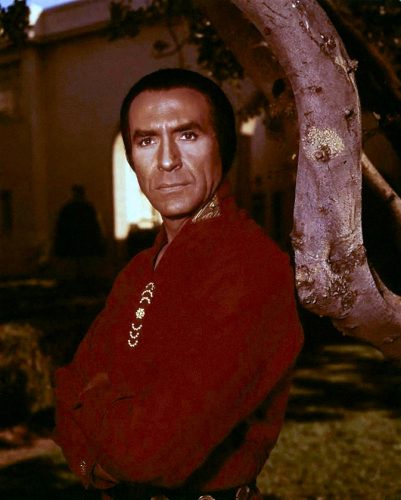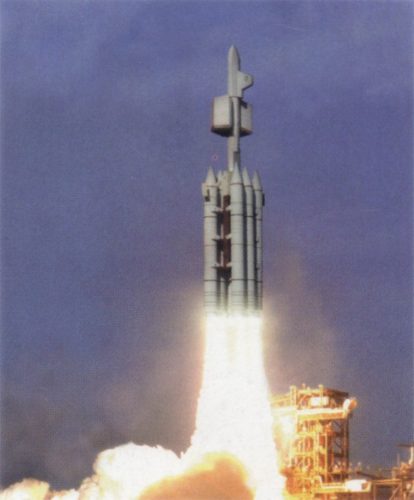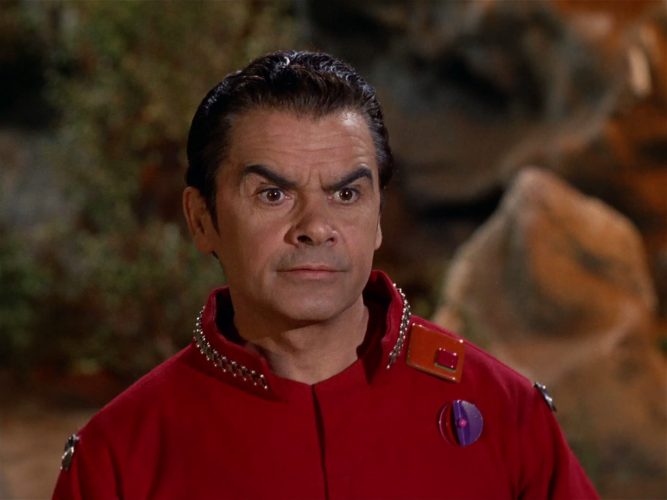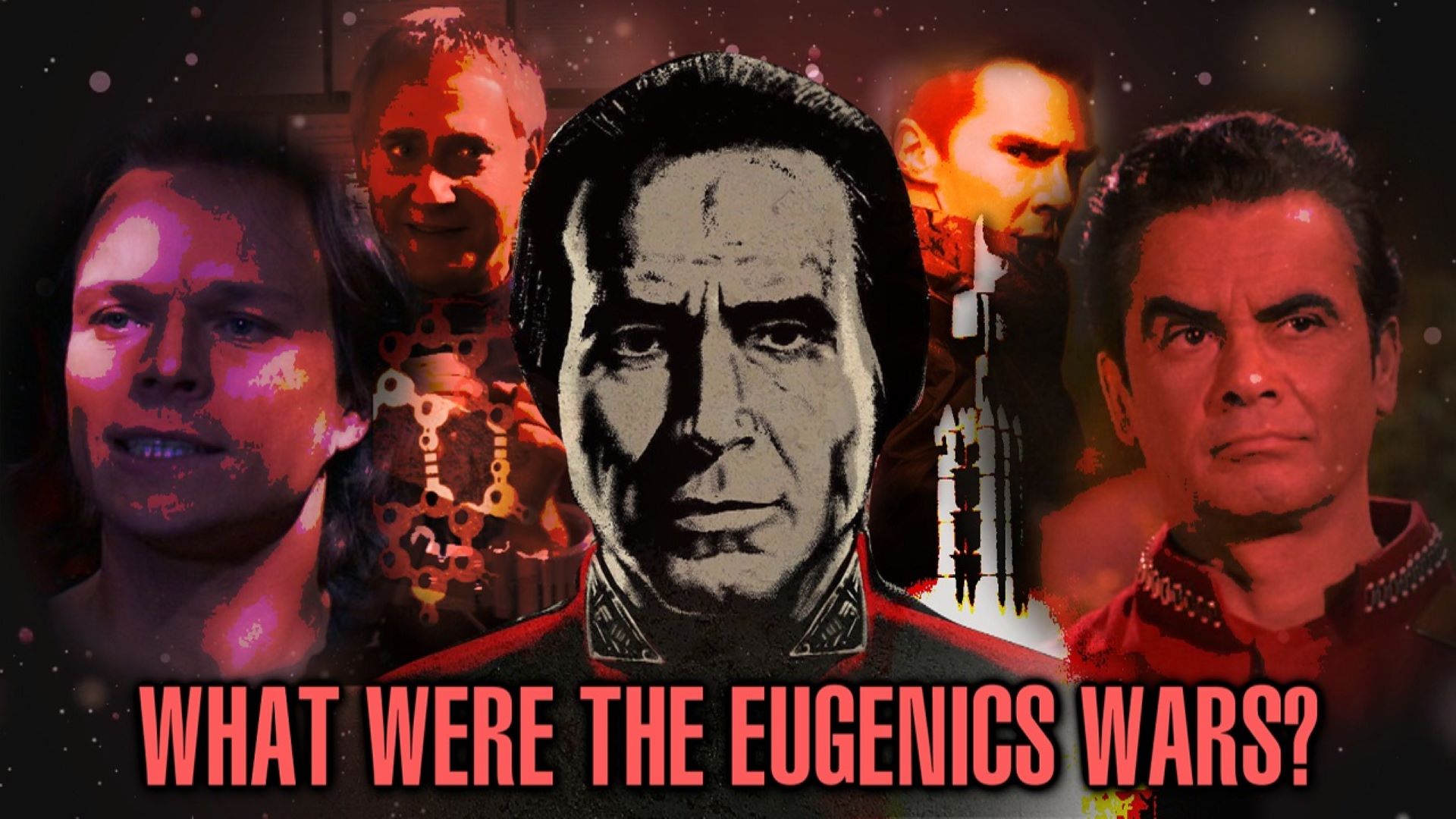Hey guys, what’s up? Tyler here. As the Star Trek franchise continues to grow and more light is shed on different time periods in Star Trek’s history, a few outstanding eras still haven’t received much attention. One is the late 20th century, the period containing the Eugenics Wars—conflicts brought on by genetic engineering that resulted in tens of millions of deaths. In addition to human society’s aversion to genetic enhancement, the Eugenics Wars’ longest lasting legacy is Khan Noonien Singh, the most prominent of the so-called Augments who ruled for four years before he and his followers were forced off-world.
The true nature of the Eugenics Wars is rather vague; as Spock indicates in The Original Series episode “Space Seed,” Khan’s first appearance, records from the period, including Khan’s origins, are fragmented. Somewhat contradictory statements have been made about the Eugenics Wars and their relation to World War III, a nuclear conflict that was just as instrumental in laying the groundwork for United Earth and the Federation. In this video, I’ll attempt to make sense of these conflicting accounts. I’ll also attempt to establish a theoretical timeline, combining canon evidence, reasonable inference, and light speculation. So, “What Were the Eugenics Wars?”
Section I: Background
We’ll start with what we know from canon. Based on information we’re given in “Space Seed” as well as Khan’s backstory from Star Trek Into Darkness, the Augments were created as part of selective breeding and genetic engineering experiments during the Cold War. Into Darkness establishes that the majority of the Augments were born around the late 1950s. Created from a variety of Earth’s ethnic groups, these “supermen,” as they were colloquially referred to, were mentally and physically superior to ordinary humans. Possessed of super strength, higher lung capacity, enhanced senses, and spectacular intelligence, the Augments were viewed by their creators as humanity’s final hope for peace in a world that had only known war.
But hand in hand with these abilities came an unmatched aggression and arrogance, which the scientists had overlooked. Due to the infancy of genetic technology, they were unable to correct these flaws; one scientist even wrote that “superior ability breeds superior ambition.” In the 1990s, a group of these Augments rose to power and held dominance over large swathes of the population. The most prominent was Khan himself, who from 1992 to 1996 was the “absolute ruler” of more than a quarter of the planet, including parts of Asia and the Middle East.

Of course, this is simply what’s been pieced together from the aforementioned fragmentary records of Earth’s history. Notably, the dialogue in “Space Seed” does not make it explicitly clear whether Khan ruled over a quarter of Earth’s population or a quarter of Earth’s landmass. Regardless, the Enterprise crew describes Khan’s reign as an exception to similar circumstances in Earth’s history, lacking internal massacres or wars of aggression until he was attacked. James T. Kirk even calls him “the best of the tyrants…and the most dangerous.” This is off-putting to Spock:
SPOCK: Gentlemen, this romanticism about a ruthless dictator is—
KIRK: Mister Spock, we humans have a streak of barbarism in us. Appalling, but there, nevertheless.
Ruling from a power base in South Asia, as the story goes, Khan was followed in 1993 by several other Augments assuming control in over forty countries. As Khan severely curtailed the freedoms of his subjects, the other Augments went further, creating slave populations from the world’s poor. But in the mid-1990s, the despots began warring amongst themselves; other nations joined in to force them from power. By the end, in 1996, most of the tyrants were defeated and their territories recaptured.
Khan and the other Augments were to be sentenced to death as war criminals, but between eighty and ninety of them went unaccounted for. Governments at the time did not publicly disclose this information to prevent a panic. Khan and 84 of his followers managed to escape in a self-imposed exile aboard a sleeper ship called the SS Botany Bay. For generations after the Augments’ secret escape, the Botany Bay was largely regarded as a myth until it was rediscovered in the mid-23rd century.
The Eugenics Wars are said to have claimed between 30 and 37 million lives, according to references in The Original Series and Enterprise. Entire populations were bombed out of existence, nearly plunging Earth into a second Dark Age—this certainly sounds like a global conflict. With debate over genetic engineering continuing into the 21st century, eventually becoming one of the major instigating causes of World War III, it’s easy to see how the Eugenics Wars and World War III are tied together. But here’s the problem…
As we are shown in other installments of the franchise, particularly the Enterprise episode “Storm Front,” several elements of Trek’s late 90s and early 2000s are shared with the real world. Examples of this include the Clinton and Bush administrations, 9/11, Saddam Hussein, the Iraq War, and more. The butterfly effect that would likely ensue in the aftermath of a years-long struggle against genetic supermen could just as likely result in a total reconfiguration of Earth’s political alignments, but instead it seems to revert back mostly to what we’re familiar with.
Whether this points to an effort by Trek writers to actually retcon the Eugenics Wars or simply portray an alternate history with some familiar elements is unclear. The official canon status of the Eugenics Wars is that they did, in fact, happen; even one of Jonathan Archer’s ancestors served in the war’s North African theater as we learn in “Hatchery.” Still, this makes reconciling the Eugenics Wars with shared real-world events rather difficult if we assume the accounts given by the characters are 100% accurate. But as we’ll soon see, that may not be the case.
Section II: A Timeline
Greg Cox’s two-part novel series, The Eugenics Wars: The Rise and Fall of Khan Noonien Singh, is the most detailed attempt to explain how the Eugenics Wars unfolded. The books effectively reimagine the Eugenics Wars as hidden conflicts that publicly manifested as the civil unrest of the 1990s, such as the Bosnian Wars, the Rwandan genocide, and more. The Augments are portrayed as having engineered the conflicts through puppet leaders until they were defeated by United Nations forces, prompting their exile.
These books, while interesting, are controversial in the Trek community as they contradict what’s directly stated on screen. The Star Trek Into Darkness tie-in comic, Khan, while equally if not more controversial, actually does a better job of fleshing out the Eugenics Wars as open conflicts in Earth’s history. They depict Khan and many of his cohorts infiltrating governments at the highest levels before enacting a plan to ascend to power and divide the world into seven kingdoms. Besides Khan, some of the Augment tyrants featured in the comic were actually name-dropped in The Original Series episode “The Savage Curtain,” such as Ferris, ruler of South America, and Maltuvis, ruler of the South Pacific.
The comic does show some events that are hard to corroborate, such as nuclear exchanges in the Americas in the 1990s. Additionally, the comic depicts the Augments conquering entire continents, which goes well beyond the scope of what we’re told in “Space Seed.” The vast sociopolitical and economic implications that would arise from these dictatorships are difficult to square with a “convergence” back to the late 90s we know.
One possibility is a more limited takeover of the world by Augment tyrants, possibly via proxy or puppet leaders as suggested in Cox’s books. This is not to say I think Cox’s account should be considered closer to canon, but rather, the globe-spanning conflict would be reduced to a specter of overseas fighting. The Augments would have taken advantage of corruption, ethnic strife, sovereign debt crises, and other upheaval in numerous countries. There are also various configurations of Asian states that could have composed Khan’s empire, with a total population comprising just under 1.5 billion. Most key nations, however, would retain their sovereignty, explaining how events like 9/11 and the Iraq War still happen.
In this scenario, citizens of most Western countries might not feel the full effects of the Eugenics Wars. Depending on the severity of the conflicts, many might not even be aware of the true extent of overseas fighting, just as the United States’ many overseas military operations are not usually at the forefront of public consciousness. But with U.N. forces comprising the meat of the alliance against the Augments, though mobilization may not necessarily reach World War II levels, institutions would nonetheless be strained particularly in the aftermath, contributing to the long recession that extends into the 2020s. This middle-of-the-road approach, balancing the constraints of Cox’s books and the open warfare of the Khan comic and references in canon, is perhaps the most realistic way of interpreting the Eugenics Wars.
The Augment empires could be seen as expanded versions of the Islamic State, which had control of large swathes of Iraq and Syria for years. Another analogue might be the Islamic Legion, the pan-Arab military force that was part of Muammar Gaddafi’s vision for an Islamic superstate in the Sahel. Khan, Ferris, Maltuvis, and the other Augments may have operated much like international businesspeople, with national leaders in their pockets and access to small but well-equipped private militaries to maintain order. Competition for resources with a U.N.-backed alliance could have been what really shaped the Eugenics Wars, and the grand tales of Genghis Khan or Alexander the Great-like escapades may have been oversimplifications, which Khan would have no reason to deny hundreds of years later.

Some fans would argue that the Eugenics Wars and World War III should be combined into one conflict in the 2050s, since that’s still in our future. I don’t necessarily agree with the inherent logic, but I do think it points to an issue that the Eugenics Wars have, in some ways, been sidelined by Trek’s own creative staff, often to incorporate real-world contemporary events when that may not be necessary. For example, although the Voyager two-part episode “Future’s End” implicitly takes place in an alternate timeline, the conspicuous lack of evidence of the Eugenics Wars in 1996 Los Angeles has been a point of discussion. The writers felt (rightly, I think) that it would be distracting to show them, and in any case, most of the fighting would have occurred overseas and concluded by the time the episode takes place.
That said, I do think it’s worth exploring the different accounts of what exactly constituted the Eugenics Wars, World War III, and other conflicts as depicted throughout the franchise.
Section III: Historiography
In “Space Seed,” Spock explicitly describes the mid-1990s as “the era of [Earth’s] last so-called World War.” He states in “Bread and Circuses” that 37 million people died as a result of despotism in World War III. But in Star Trek: First Contact as well as the Discovery episode “New Eden,” Will Riker and Michael Burnham, respectively, cite the death toll of World War III as 600 million—many from a nuclear exchange in the 2050s. Data also states in The Next Generation that in the early 22nd century, humans were still recovering from the effects of World War III, suggesting a mid-21st century conflict.
Now, obviously, given that the dialogue connecting World War III with the 1990s was written thirty years before such events were to have happened, it’s understandable that discrepancies would arise as real-world history began to unfold. But even taking this into account, maintaining consistency in canon about this was evidently not a concern; this points to a debate over the language used to name these conflicts. Was the 2050s nuclear exchange World War IV? Not according to dialogue across multiple series and films, by any stretch.
So, what gives? Just as the death toll figures are less concrete than they may initially seem, since Spock also gives low figures for deaths in World Wars I and II, the exact phrasing of the Vulcan officer’s claims is really what’s worth examining here. As both the Eugenics Wars and later World War III are fought over the issue of genetic enhancement, the two could be seen as a connected conflict—the second being a continuation of the first. This is similar to how World War II is seen as the logical conclusion of unresolved issues with the Treaty of Versailles.
In the context of civilian deaths due to despotism, Spock states there were six million in World War I, eleven million in World War II, and 37 million in World War III. In real life, World War I’s civilian casualties totaled about seven million, while in World War II it was upwards of fifty million, eleven million of whom were victims of the Nazi regime. According to Enterprise, the 37 million figure is also the number of deaths caused by the ecofascist militia leader Phillip Green in the early 21st century; his actions were seen as one of the primary catalysts of Earth’s decades-long third world war during this time period. So, this would suggest that Spock’s 37 million figure and the other 30-35 million figures may be distinct from each other, even if the two wars are related.

“Roving continuity” is a concept that many Star Trek fans are averse to, as they see it flying in the face of a measured attempt to maintain consistency throughout the franchise. However, even Gene Roddenberry himself considered many elements of The Original Series to be non-canonical, as revealed in interviews with various colleagues of his. This is not to say Roddenberry had the final word on what was canon, but his openness to retconning certain elements of The Original Series in later installments could provide some wiggle room in trying to reconcile conflicting statements between different series. In-universe, referring to the same conflicts by different names could also simply be a consequence of the way Federation historians categorize human wars, just as some say the Seven Years’ War in the 1700s could qualify as the First World War.
Final Thoughts
I’ve definitely presented a lot for anyone to unpack should they wish to examine the arguments presented in this video. I think the main point I want to get across is that, as with most historical events depicted in sci-fi continuities, the divergent nature of real-life events often inevitably leads to sci-fi stories becoming alternate history. This is already the case in other instances in Star Trek: the aborted launch of an antiballistic missile system in 1968, the launch of four additional Voyager probes and the Nomad probe, the opening of a colossal self-contained second biosphere in rural Pennsylvania, and so much more. As time marches on, one day, too, will we observe that the Bell Riots never come to pass, as well as the specific events of World War III and First Contact.
This doesn’t mean that Star Trek canon should be discarded; just because it’s always depicted a future from the standpoint of the writers in their respective eras doesn’t mean it isn’t compelling when those futures aren’t realized. Khan is one of the most formidable, foreboding villains in Star Trek; hell, they even made a whole movie about his wrath! I think preserving some of the mystery behind his true origins and his life events before “Space Seed” is rather worthwhile, given that it’s his charisma and other qualities that sell the character, not just his backstory—as intriguing as it is in and of itself. Will we find out more about the Eugenics Wars one day? Perhaps, but for now, I hope this video has served at the very least as a prompt for discussion about how the franchise has handled one of the most impactful conflicts in Trek humans’ history.
Watch Orange River Media’s Video
Thank you all so much for watching! I’m interested to hear your thoughts in the comments. If you haven’t yet subscribed, be sure to do that as well so you won’t miss future uploads and click the bell icon to receive all notifications. If you want to support my work even further, becoming a YouTube member or a patron at patreon.com/orangeriver is a great way to do so. I’ll see you in the next video…live long and prosper.
YouTube: https://www.youtube.com/orangeriver
Twitter: https://www.twitter.com/orangerivernw
Instagram: https://www.instagram.com/orangeriver.nw
Facebook: https://www.facebook.com/orangerivernw
Patreon: https://www.patreon.com/orangeriver












